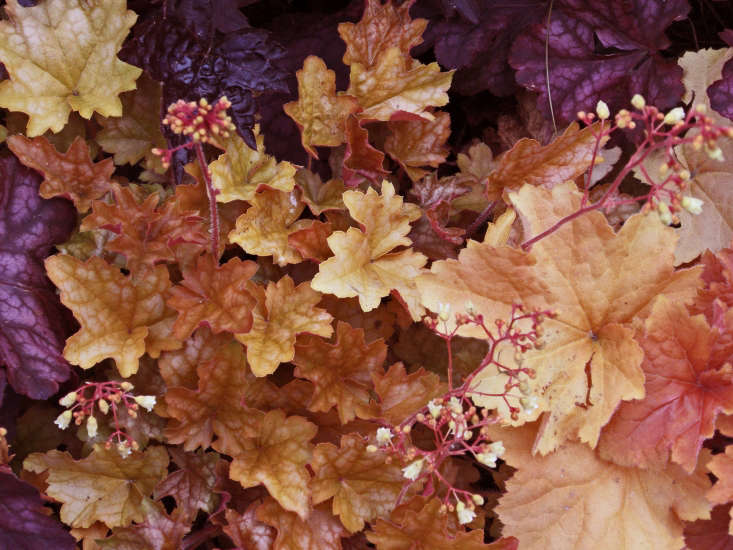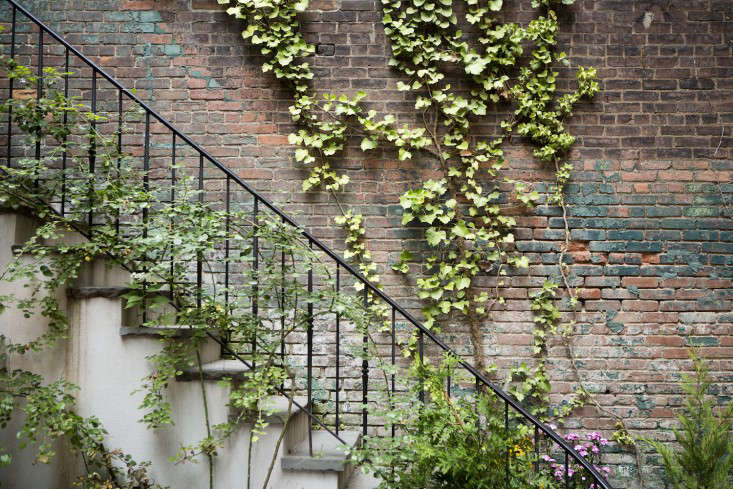Coral Bells, Heuchera: “Lightcatchers”
Ever wonder how to add serious interest to the mostly shady parts of a garden? Heuchera, with luminously colored leaves that catch the light, is the evergreen perennial that works hard, and works wonders for any garden.
Please read on to learn more:

With scalloped or ruffled leaves, Heuchera’s low, mounding form makes it the perfect candidate for ground covers, borders/paths, woodland gardens and container plantings.

And it has the power to brighten any gloomy area of the garden because of its conspicuously attractive foliage that comes in a rainbow of colors such as lime, burgundy and peach.

Plus fabulous names match the hues, such as ‘Caramel’, ‘Lime Rickey’ and ‘Cajun Fire’.
Cheat Sheet
- Heuchera looks best planted where its colorful leaves can contrast with other colored perennials. For example, Heuchera ‘Citronelle’ with its electric-lime leaves really stands out against black mondo grass. The fantastic leaves can also be used in floral arrangements.

- Heuchera blooms in late spring, producing clusters of dainty, but mainly insignificant blooms in colors raging from white, pink, and red. The name coral bells is a reference to the small bell-shaped flowers, but really I think the name should instead reference the plant’s striking leaves.
- Try adding a few Heuchera to a shady container planting to create a collar for taller centerpiece plants. Or plant it in a pollinator garden because the plants attract hummingbirds, bees and butterflies.
Keep It Alive
- Plant Heuchera in part sun to full shade to look its best, otherwise leaves will burn, unhappily crinkle, and turn bacon-crispy. Tip: The darker the leaf the more sun it can take (for sunny spots, try the variety ‘Palace Purple’). When leaves look a bit raggedy or the flowers fade, trim leaves and stems closely to the base.
- Heuchera does not like soggy soil, which is good because it appreciates being planted in that troublesome dry shade spot that every garden seems to have.
- Before planting Heuchera, amend the soil with compost to create a well-draining and healthy medium. And don’t worry too much about fertilizing because they are not heavy feeders.

Before you reach toward pedestrian ground covers, remember to search out all the textural and colorful options available with Heucheras. Your garden will thank you.
N.B.: For more of our favorite ground covers, see our Garden Design 101 plant guides on Bacopa, Ivy, and Alyssum.









Have a Question or Comment About This Post?
Join the conversation